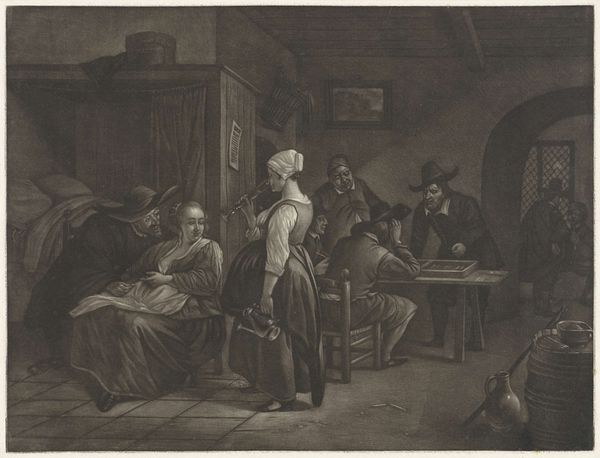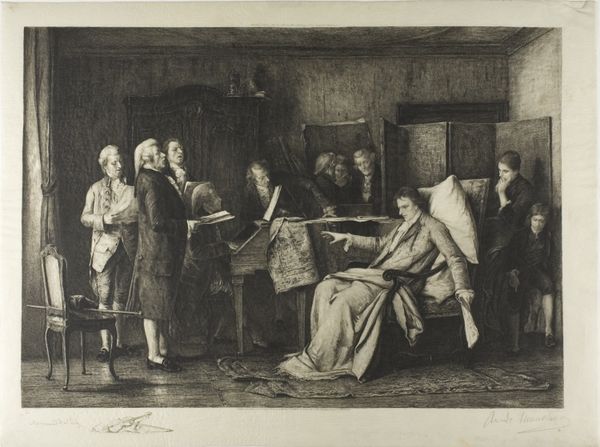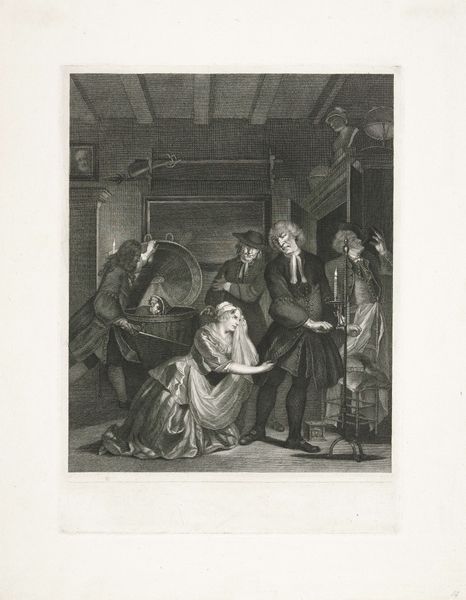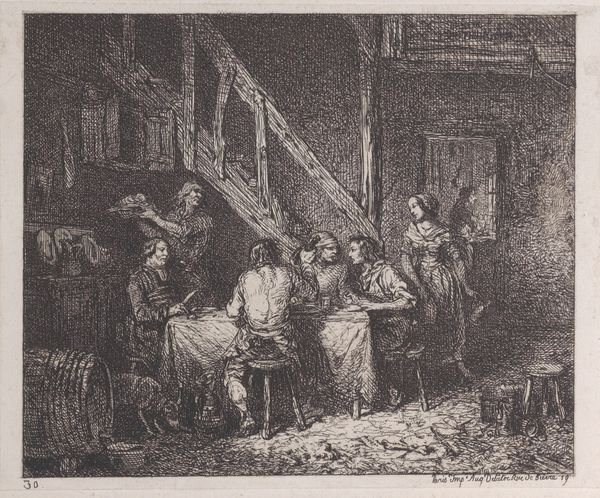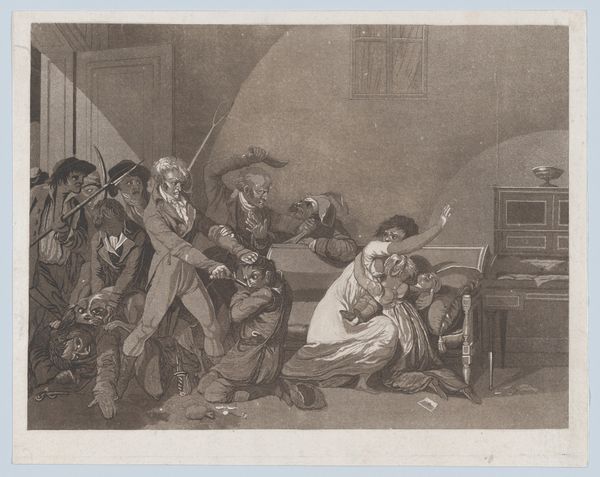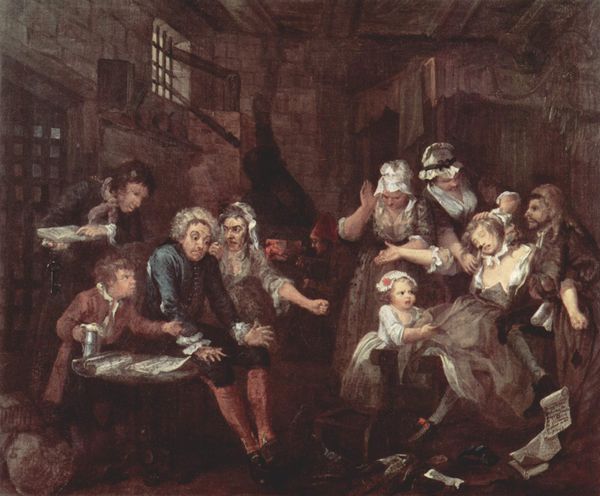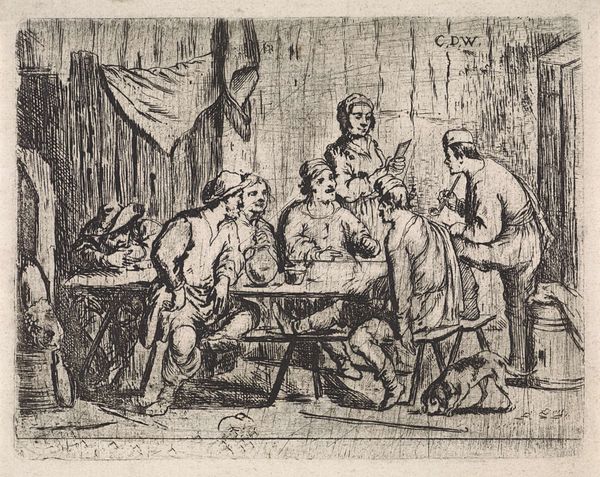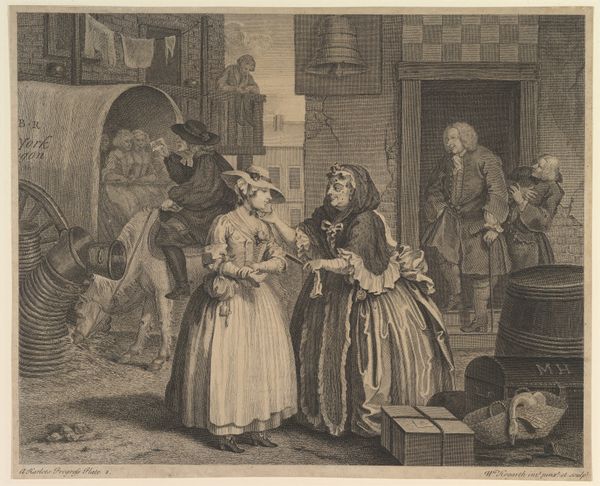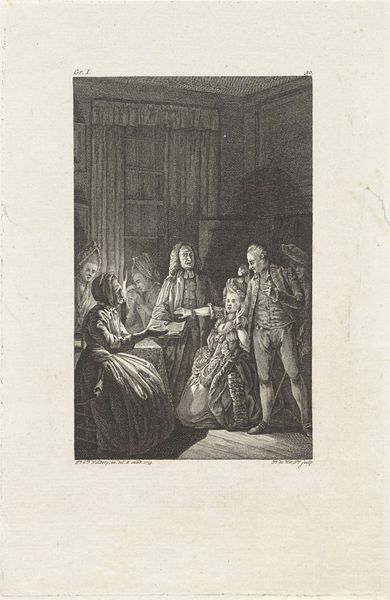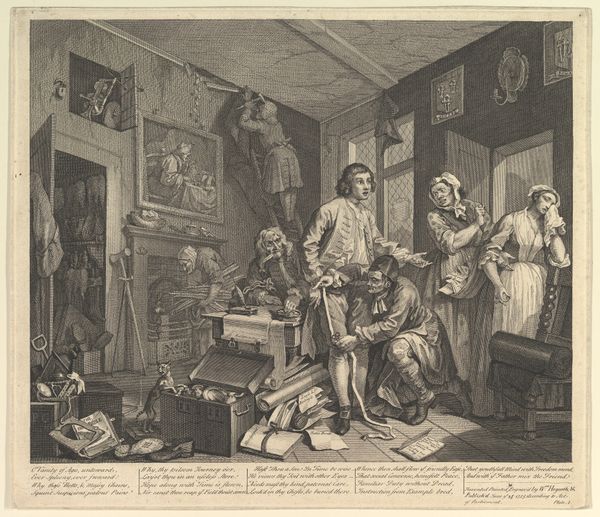
Copyright: Public domain
Curator: Let’s consider this intriguing graphite work on paper, created in 1860 by Vasily Perov. It's titled, "The first rank. Son of a sacristan, produced in the collegiate registrars." Editor: It immediately strikes me as having a stage-like quality. The high contrast and tightly arranged figures create a sense of contained drama, wouldn’t you agree? Curator: Absolutely. Perov, deeply invested in social critique, often used his art to expose the injustices of his time. "The first rank..." speaks volumes about social mobility and class distinctions in 19th-century Russia. The son of a clergyman, forced into a secular role, the 'first rank', hence the title’s loaded irony. Editor: Note the almost theatrical lighting. The figures are strongly illuminated, emphasizing their features and clothing, set against the muted tonality of the space and highlighting the stark divide in condition and attitude, Curator: He's depicted here undergoing some form of inspection by the impoverished people around him, their clothing ragged, underscoring his privileged departure from them, it represents a critical juncture in the lives of individuals navigating a rigid societal structure. Editor: I agree and that point, made solely in grayscale, heightens its poignant tension. But consider the arrangement of figures; Perov creates visual relationships using contrast and light. Curator: Precisely! Look at the positioning of the central figure, set off in checked trousers, he looks forward. The people helping him with his jacket are much poorer and appear either solemn or in silent resentment. The contrast creates an immediate narrative about hierarchy and transformation. There’s tension, but also an inescapable resignation. Editor: Indeed, the composition guides our eyes to decode social disparities while maintaining visual harmony. The use of cross-hatching, and subtle variations in tone provide an almost photo-realistic snapshot from everyday life. Curator: Yes, this piece serves not merely as a portrait, but as an incisive narrative painting that compels us to examine the societal forces shaping identity. It makes a statement about privilege. Editor: It is the masterful balance of light and dark, a testament to Perov's ability to turn grayscale into a vibrant spectrum of human emotion, what really makes this so captivating. Curator: By emphasizing historical contexts, we can appreciate the enduring power of art as a medium for voicing sociopolitical commentary and to deepen discussions about intersectional inequality in the current social and political climate. Editor: Yes, the drawing’s form shows how crucial close attention is when it comes to unlocking a drawing's complex meaning.
Comments
No comments
Be the first to comment and join the conversation on the ultimate creative platform.
